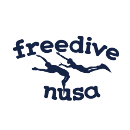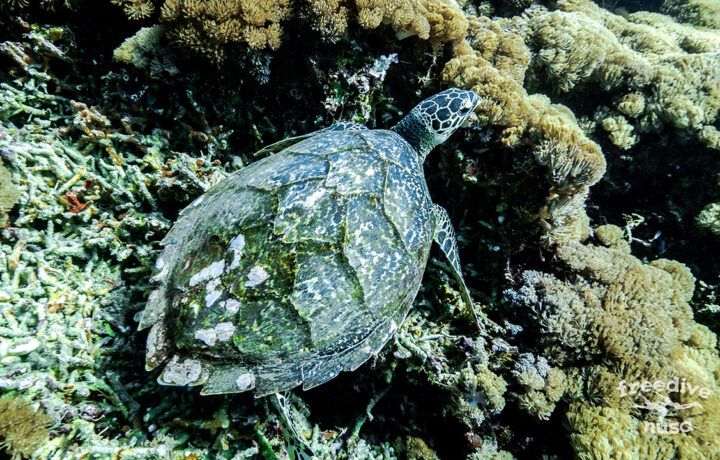Tired of the four walls of your office, commuting, seeing the same people? Or have you already tried freediving and fallen in love, and now want to share your passion with other people and popularize the sport? Or are you fascinated with nature and want to spend your working day surrounded by corals and turtles? The reasons why people consider starting a career of a freediving instructor are different, and so are their journeys. To make sure yours is smooth and comfortable, let’s go other the key factors that will help you become a confident instructor:
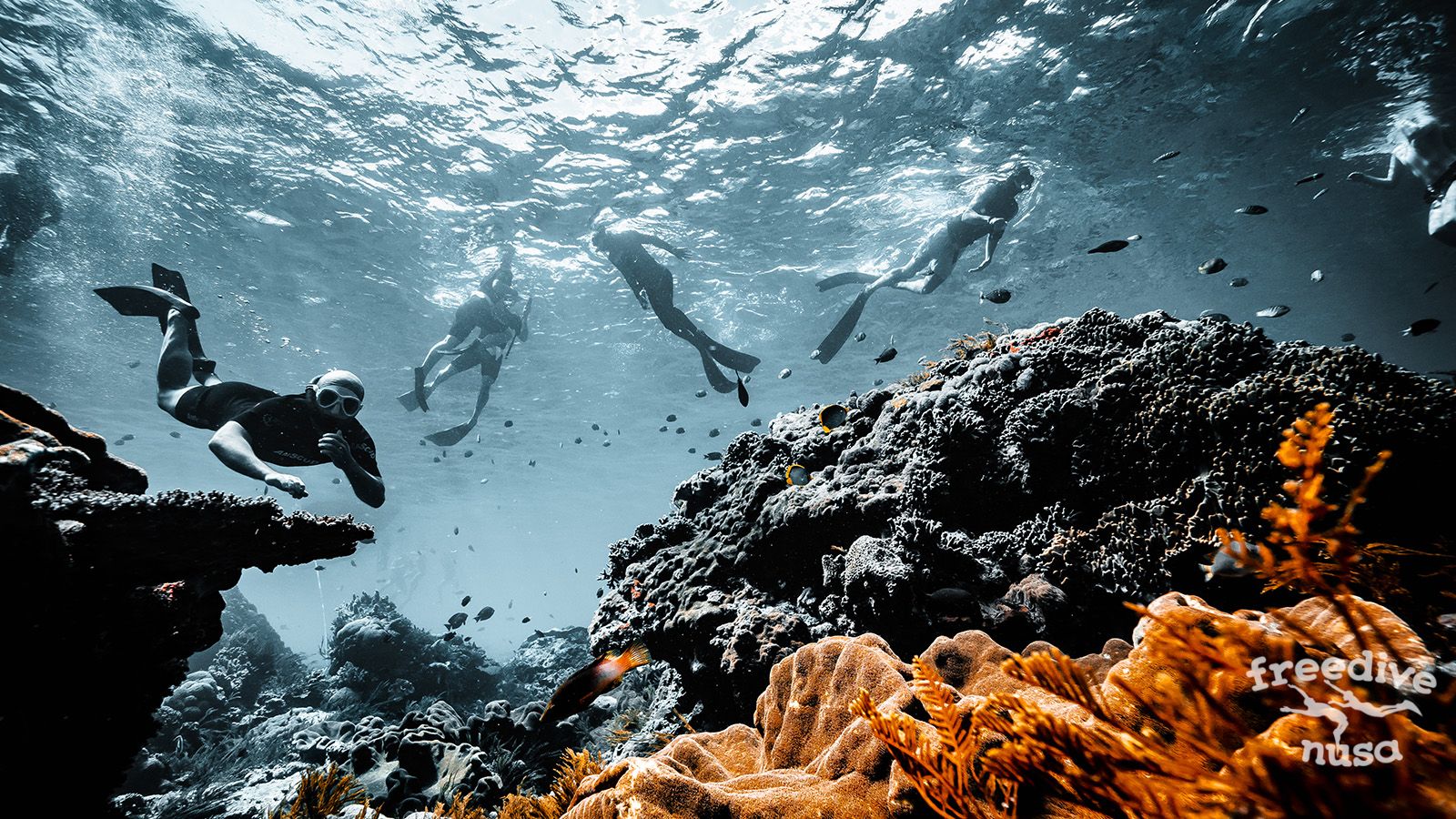
1. Comprehensive training
The first thing you need is a good foundation, both in terms of theory and practice. To become a freediving Instructor, you need to have at least the Molchanovs Wave 3 certification or equivalent from other agencies. It’s better if you feel comfortable with the depths and distances associated with Wave 3 rather than reaching them by the skin of your teeth.
If you’re a complete beginner, it’s worth taking our From Zero to Hero course. It includes Molchanovs Wave 1 and Wave 2 with additional training sessions in between to gain more practice and confidence, as well as a Master course with Wave 3 certification. This way, you can come to grips with the necessary skills and techniques without any rush, making sure they properly settle.
If you already have some freediving experience and reached Molchanovs Wave 2 (or equivalent), we recommend taking the Master course at Freedive Nusa with Wave 3 certification. It means a month of coaching and training as well as an insight into the work of an active freediving school. For an aspiring instructor, this is priceless: you’ll be able to watch other instructors at work, learn about the school management, assist at courses and all the school’s activities, and generally learn the trade that is soon to become your own.
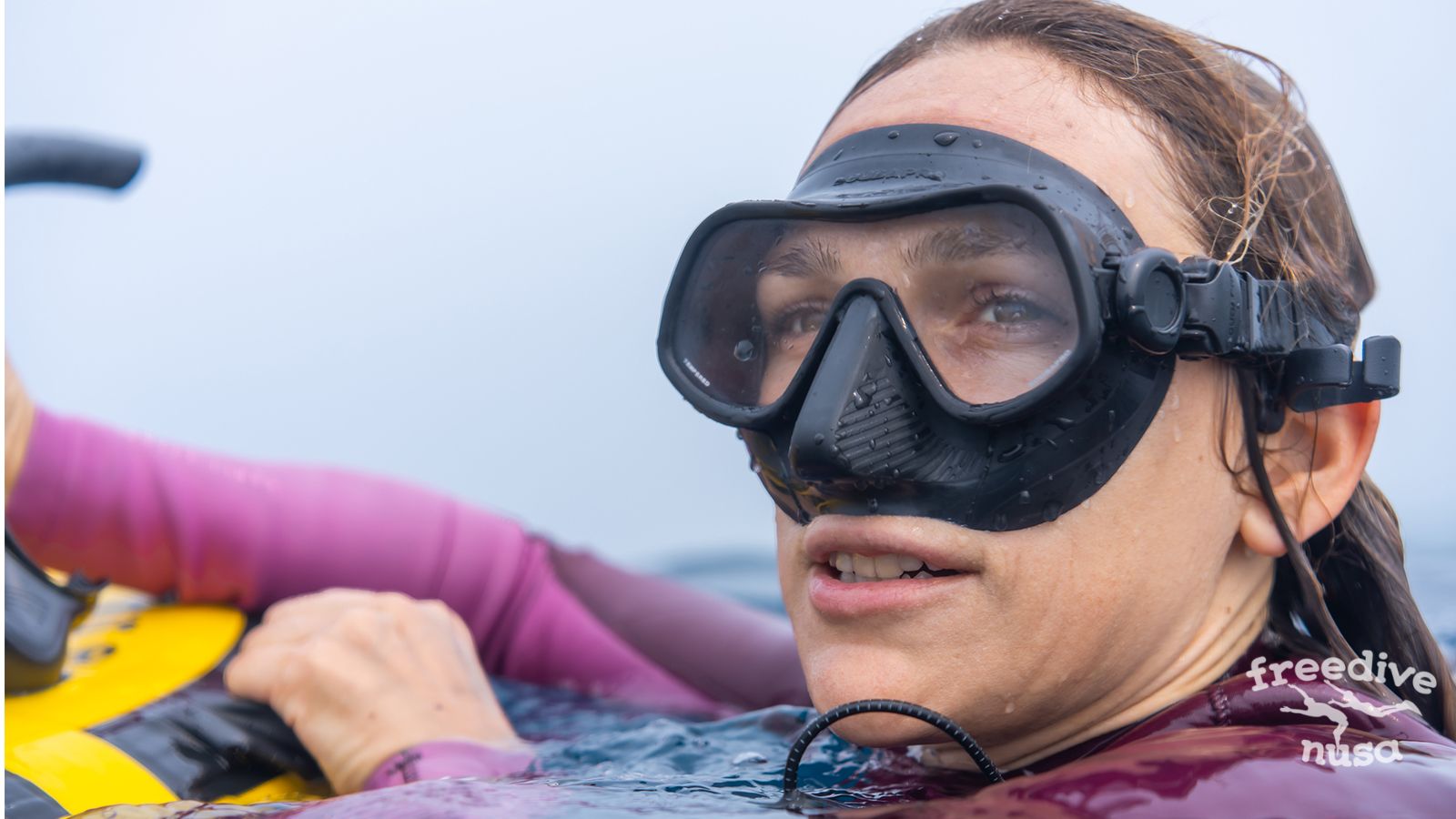
2. Understanding what the instructor course is about
Some people take an instructor course expecting to learn how to make up training programs for themselves and become better freedivers. But this is not what happens during a freediving instructor course! To unlock a new level in your own freediving skills, take a Wave 4 course or find a personal coach. An instructor course is about teaching other people, not training yourself. You’ll learn to explain freediving techniques, identify the problem when your students are stuck, lift their morale if they feel discouraged. You’ll be set to become a good instructor. Being a good athlete requires other qualities and is taught at other courses.

3. Choosing the right instructor trainer
Ideally, your instructor trainer is someone you already know from your previous training. This way, you can be sure you understand them well, feel comfortable with their method, and trust them. If you have no other choice but to jump into the unknown, read the reviews: if someone is a good instructor for beginners, it means they get on well with people, know a thing or two about safety, and generally like their job.

Many people say you should “only learn from the best”. You totally should, if by the best you mean the best instructors; it’s more complicated if “the best” refers to renowned athletes. The roles of an athlete and an instructor are different. Some people are able be good at both, but it’s not always the case. Your instructor is the person who introduces you to depth and apnea training. An athlete is someone who trains themselves and takes a solo journey to record-breaking depths. We believe if someone wins titles and breaks records, it doesn’t necessarily mean they are a good instructor or a good person. It means they’re a good athlete. So choose wisely: your comfort during your instructor course contributes a lot to your results.
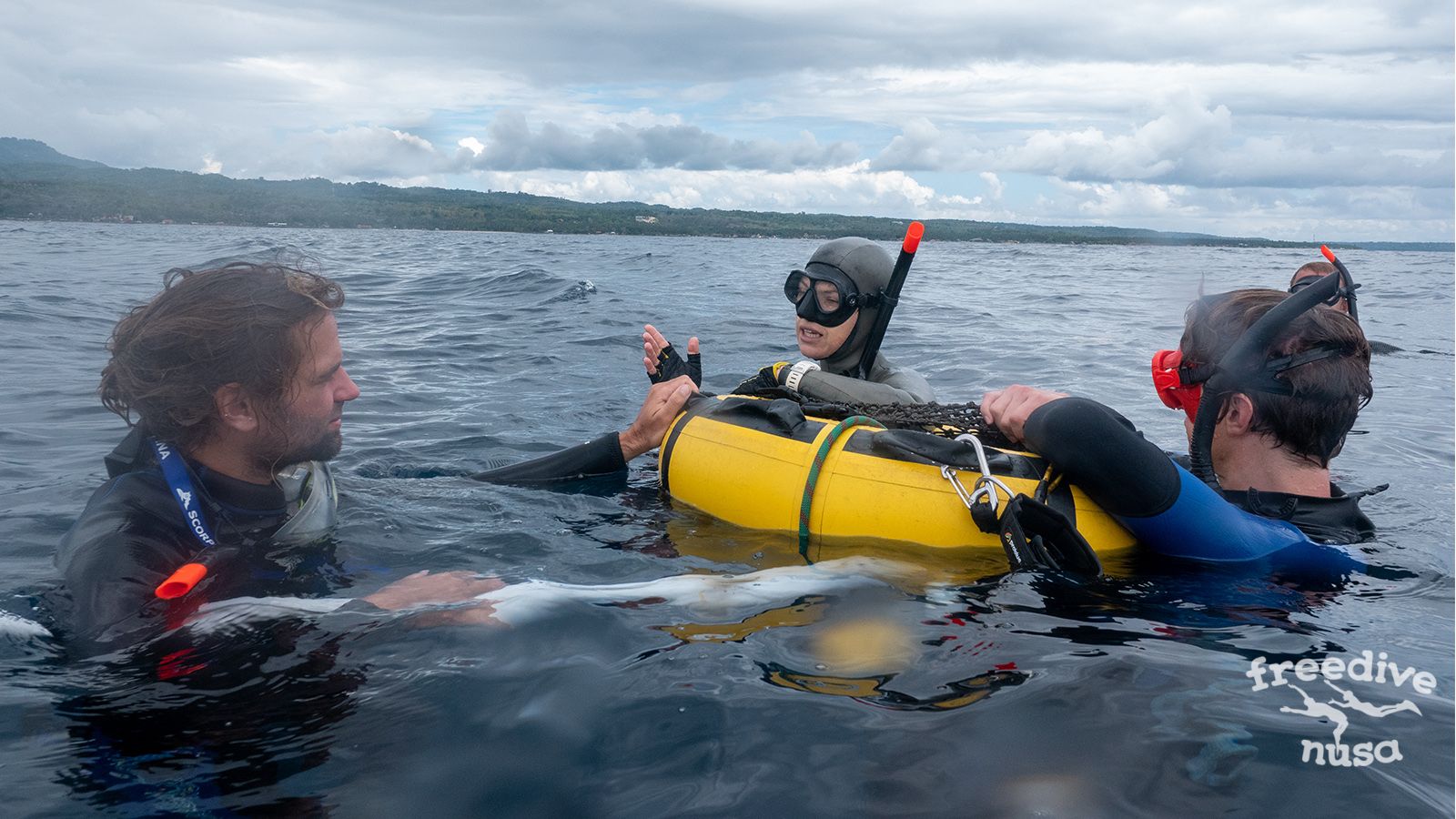
4. Finding the right place
The location where you take your instructor course determines the conditions you’ll be trained in, which has a great impact on what you’ll learn. If you get your freediving instructor certification after training in a warm, well-lit indoor pool, finding yourself teaching in a cold dark lake with poor visibility and only basic facilities might puzzle you. On the other hand, if you learn to teach from a boat, while drifting, with strong currents and heavy boat traffic, you’ll feel unabashed whatever comes in future. So picture where you’d like to work and choose the school accordingly.

5. Meeting the requirements
To get certified as an instructor, you’ll have to meet certain requirements, both in the pool and in depth. For the Molchanovs W2I (for Wave and Lap 1-2), they are described below. Please note that different systems (such as PADI, AIDA, and so on) have different requirements:
- 40 m CWTb & FIM
- 30 m CNF
- 25 m rescue + 50 m surface tow (This means diving after your buddy, helping them to the surface, and towing them for 50 meters on the surface without a break while applying rescue breaths, simulating getting their unconscious body to the boat or to the shore)
- 100 m DYN
- 60 m DNF
- 4 min STA
- 15 m Stand-by rescue (This means you dive after your buddy and wait for them at the depth of 15 m for at least 60 seconds, then lifting them to the surface after they reach you)
- CO2 Dive (This means you vertically fin on the surface while breathing, keeping your elbows out of the water, for at least 60 seconds, after which you immediately take a deep breath and dive to 20 m CWT. Yes, your legs will hurt! But it’s totally doable)
- Exam
- First Aid course from a certified agency (this you’ll need to renew every 2 years to make sure your safety protocols are up to date)
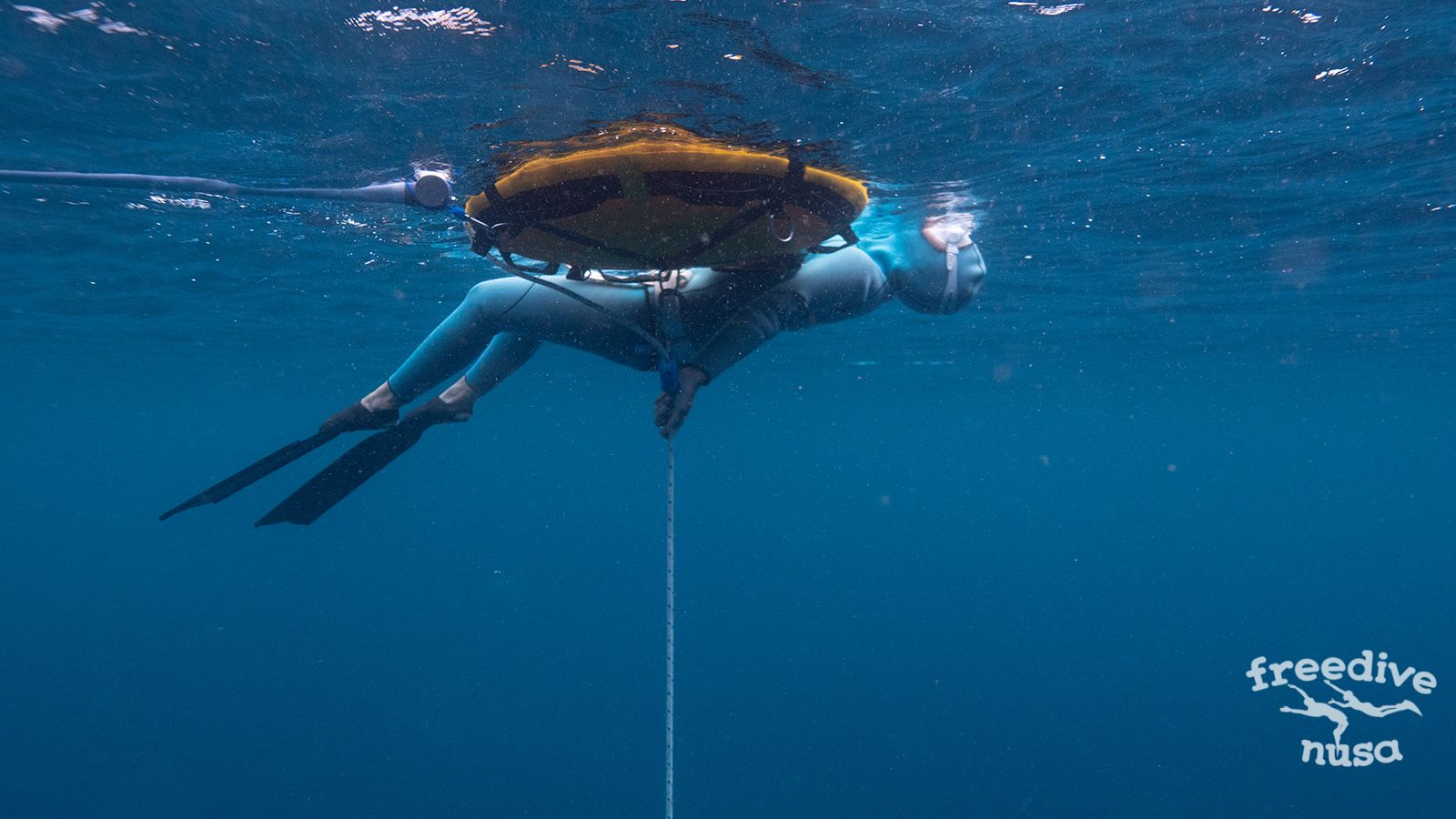
Keep in mind you don’t need to meet all the requirements at once: you have a year to complete everything. So if you’re having any difficulties, take a break and then perform again with any certified Molchanovs instructor, then send the video of your performance to your instructor trainer, and enjoy your brand new certificate!
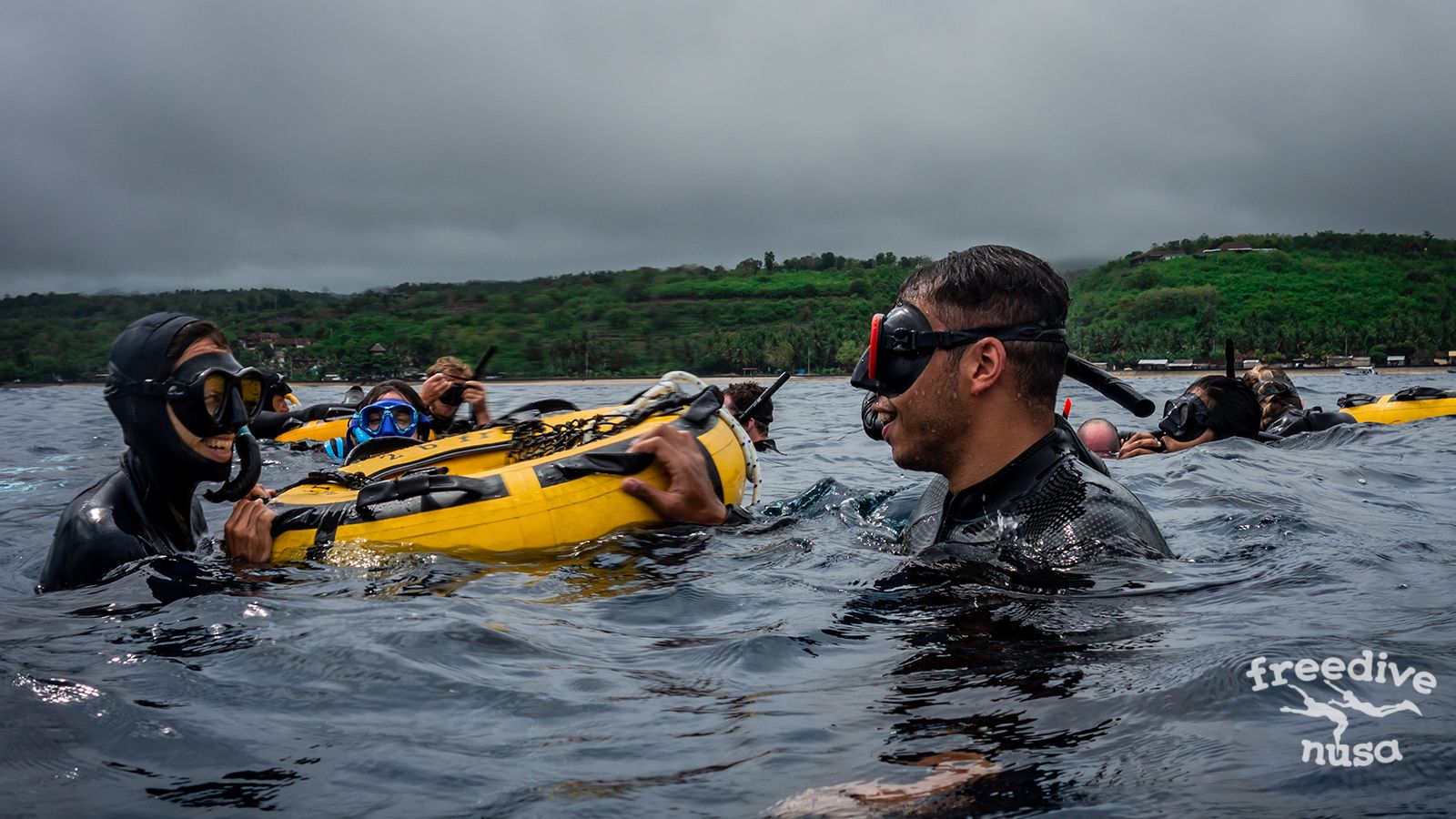
6. Career options
The instructor course is just the beginning of your freediving career! If you have an opportunity, we recommend starting at a freediving center to work in a team of professional international freediving instructors and learn from more experienced colleagues to develop your own unique teaching style and generally understand what you want from your career (even if you plan to work as an independent instructor in the future). After that, you can decide if you’ll be teaching independently, structuring your time and location, or join a freediving school for the security of the constant flow of customers.
You can continue with your daily job and enjoy a secret life as a freediving instructor after your office hours or embrace your new career completely. You can live in the city, teach in the pool and organize depth courses a couple times a year or move to the seashore to enjoy the allure of the immense blue. If you don’t dive deep, you can focus on pool training and teach regular classes. There are many formats, and you can choose the one that works for you – or switch between them for new experiences.

The job of a freediving instructor is one of the most rewarding ones in the world. You’ll meet new people from different places, many of whom will become your good friends. You’ll travel to unusual locations discovering mesmerizing sights that ordinary people only see on their computer’s home screen. You’ll help your students see the abilities they never thought they had. You’ll share their happiness as they reach a new milestone in their training. And if any of that appeals to you, don’t wait and sign up for the next Molchanovs or SSI freediving instructor training course at Freedive Nusa!
